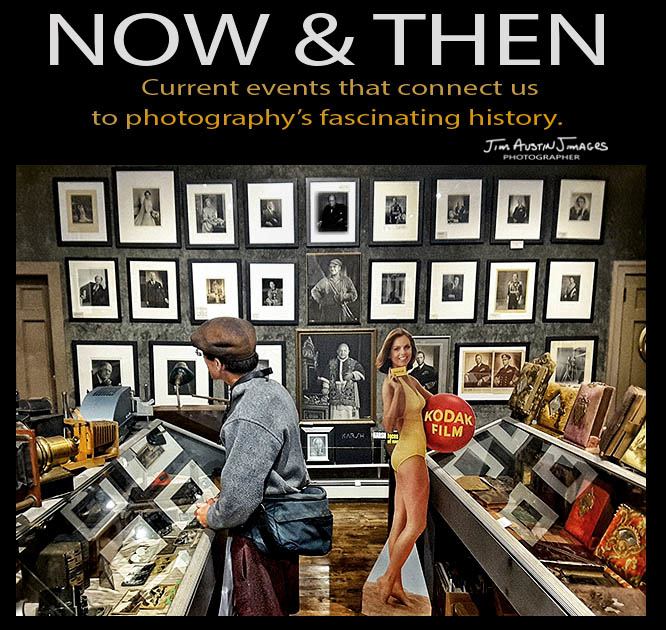
Just now, a glassy-eyed Mick Jagger stares at Pope John XXIII while a bathing-suited Kodak girl holds a box of 35 mm film underneath her timeless cardboard smile.
It was an encounter with a quirky mix of characters, inside the gallery, which featured the work of three master photographers at the Sherman Hines Photography Museum.
Sherman Hines himself was away on assignment, working on his series “Trophy Rooms Around the World.” His images, and those of two other Canadian photographers, portray the famous, the wealthy and indigenous people. Their work connects us to our history and to the present.
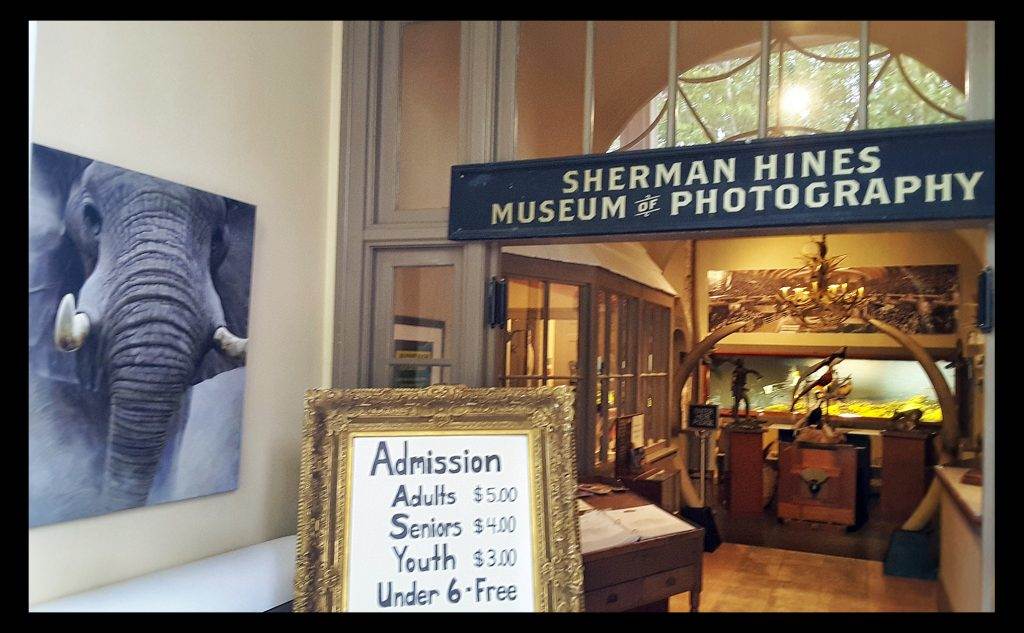
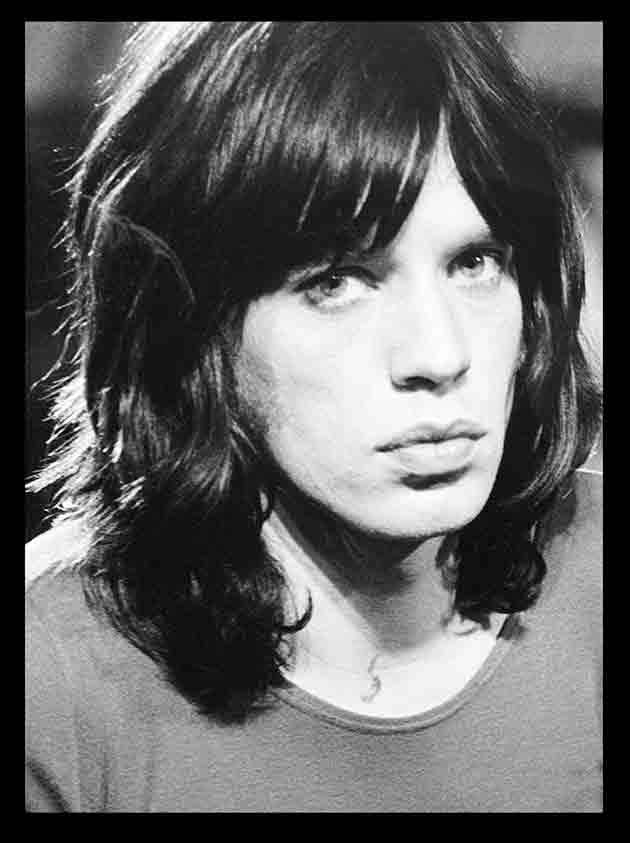
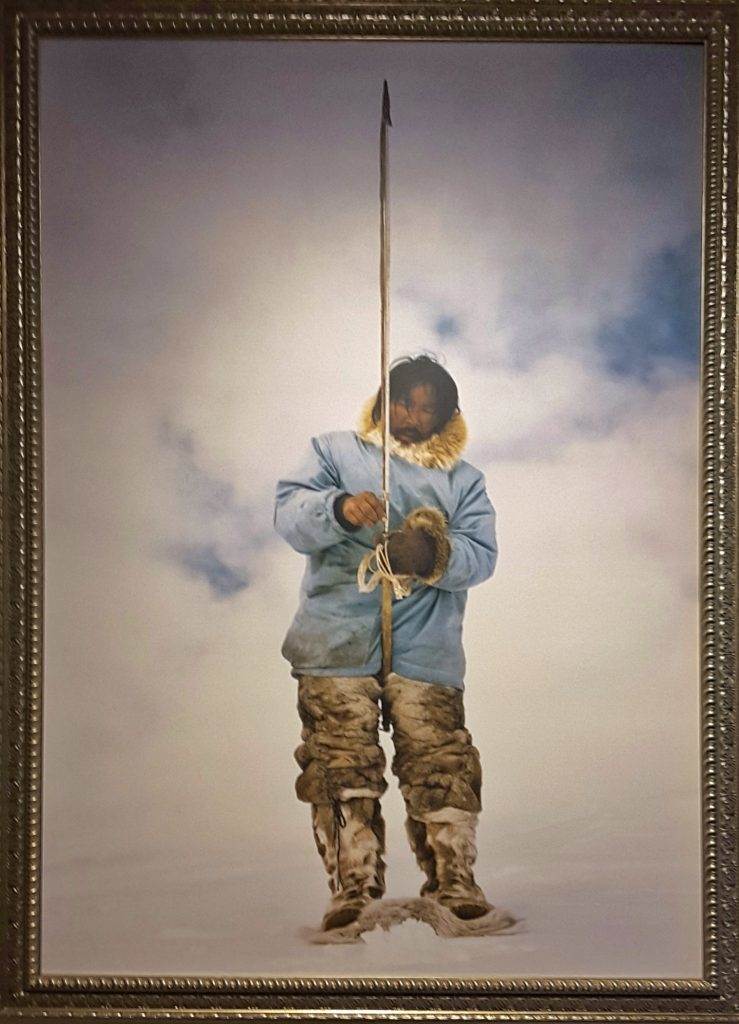
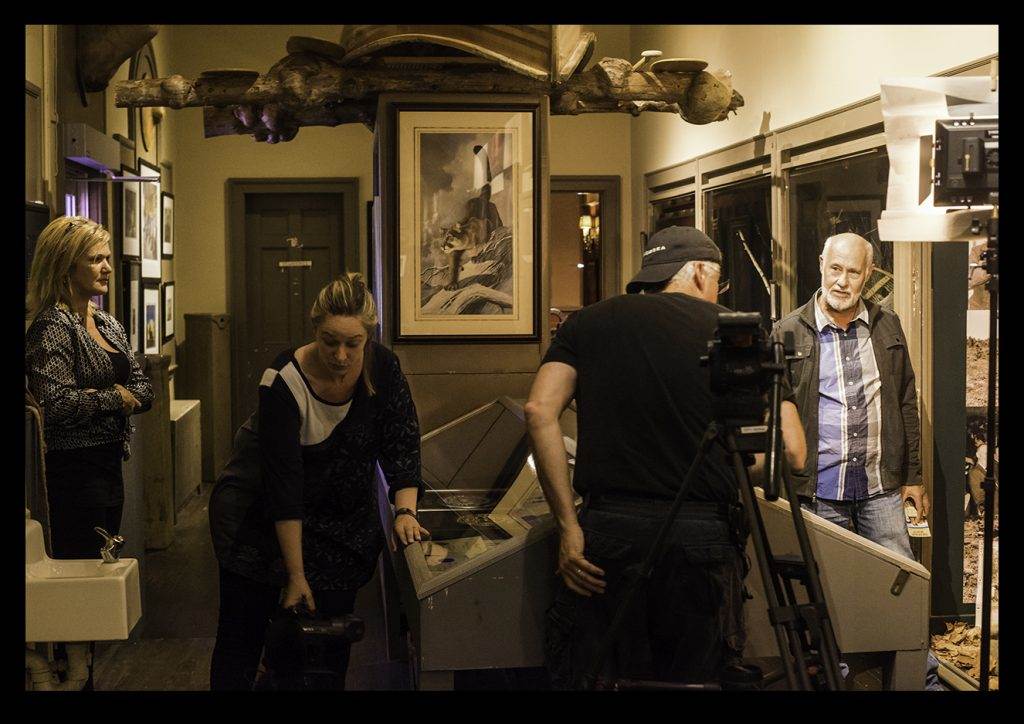
Above right, Warren Wagner of Liverpool, Nova Scotia is interviewed about details of First Nations Mi’kmaq life and culture for the CBC’s “Land and Sea” monthly series on Canadian TV. Director /Writer Rachel Bower ( Above, second from left) said the CBC’s national TB series is about unique museums and collections in the maritimes that connect people to culture and history.
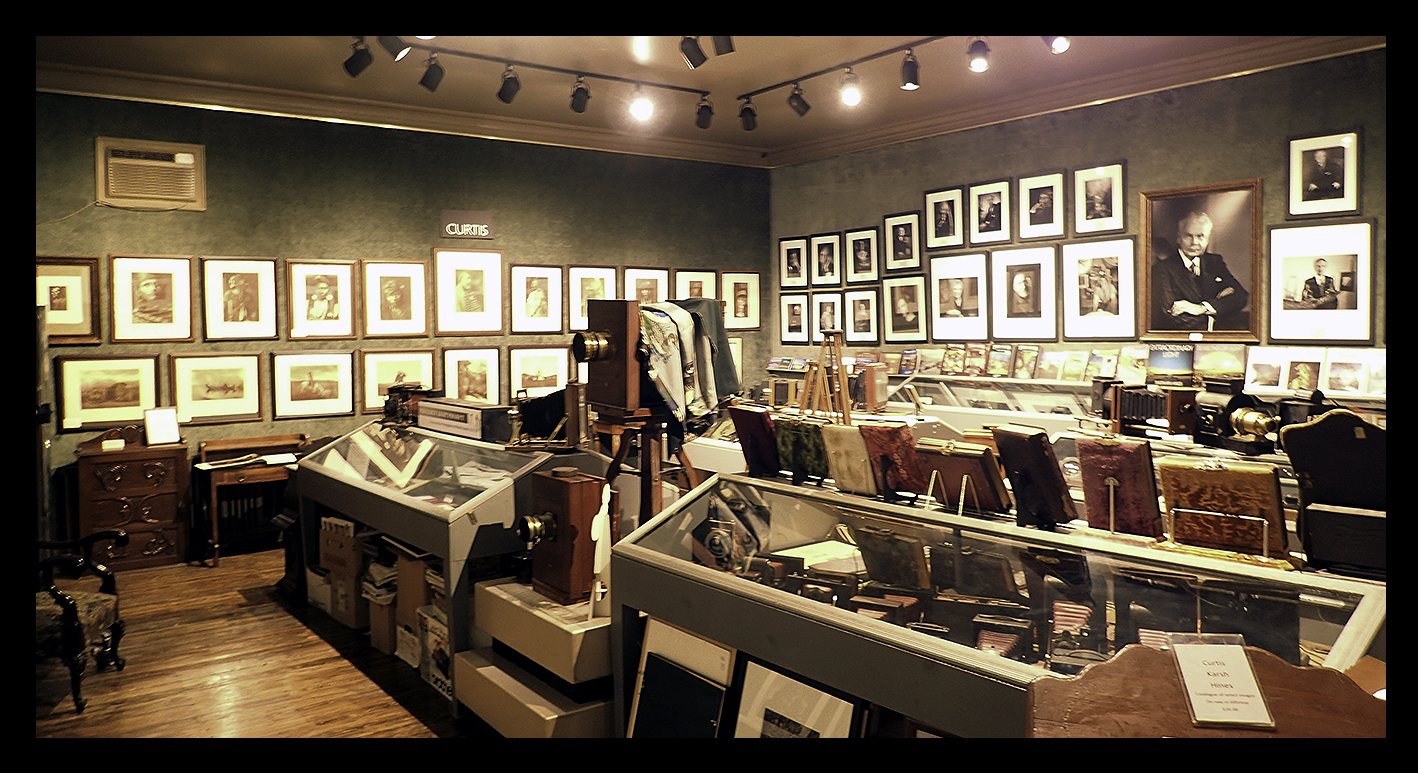
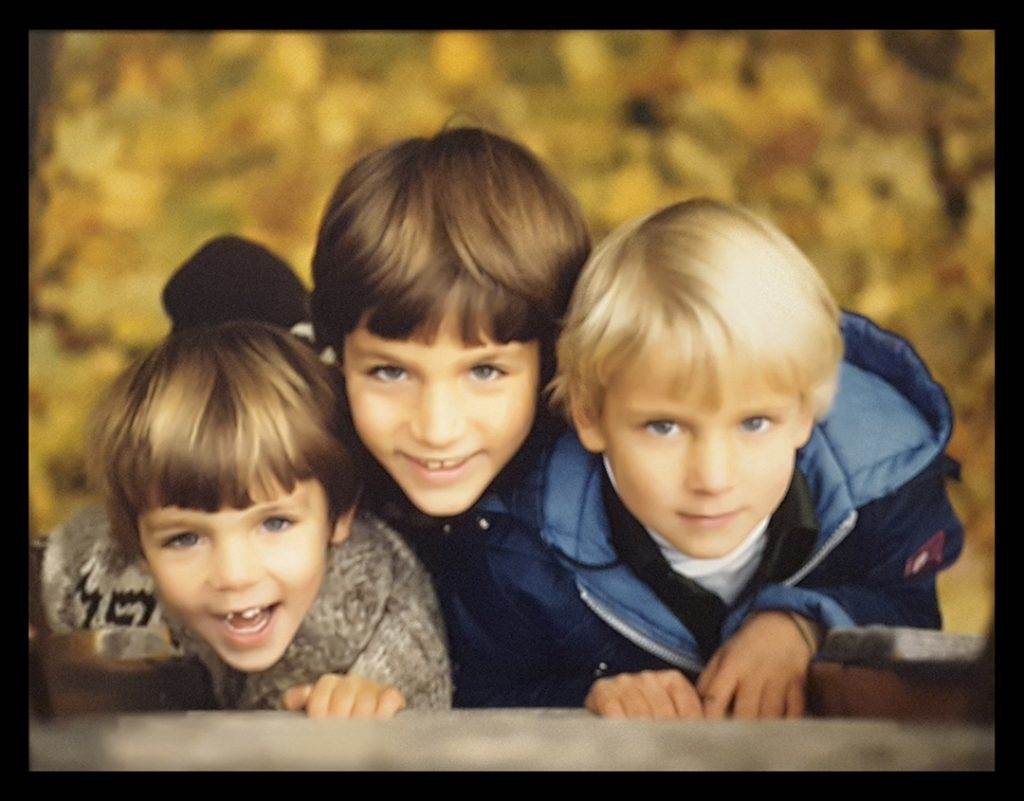
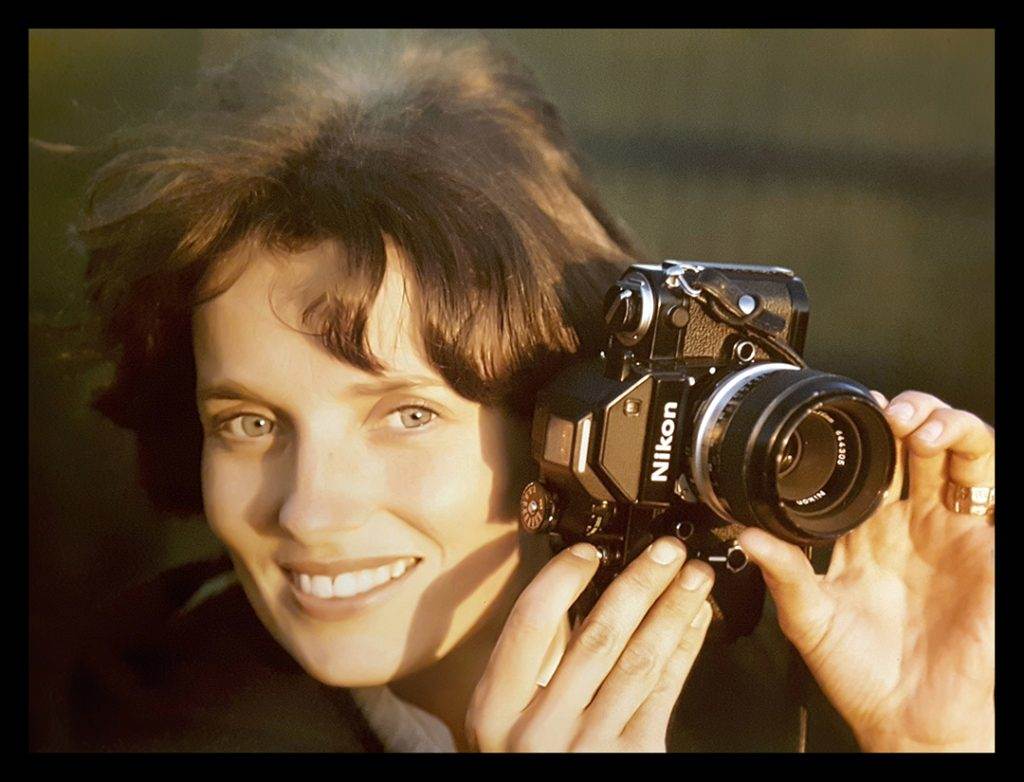
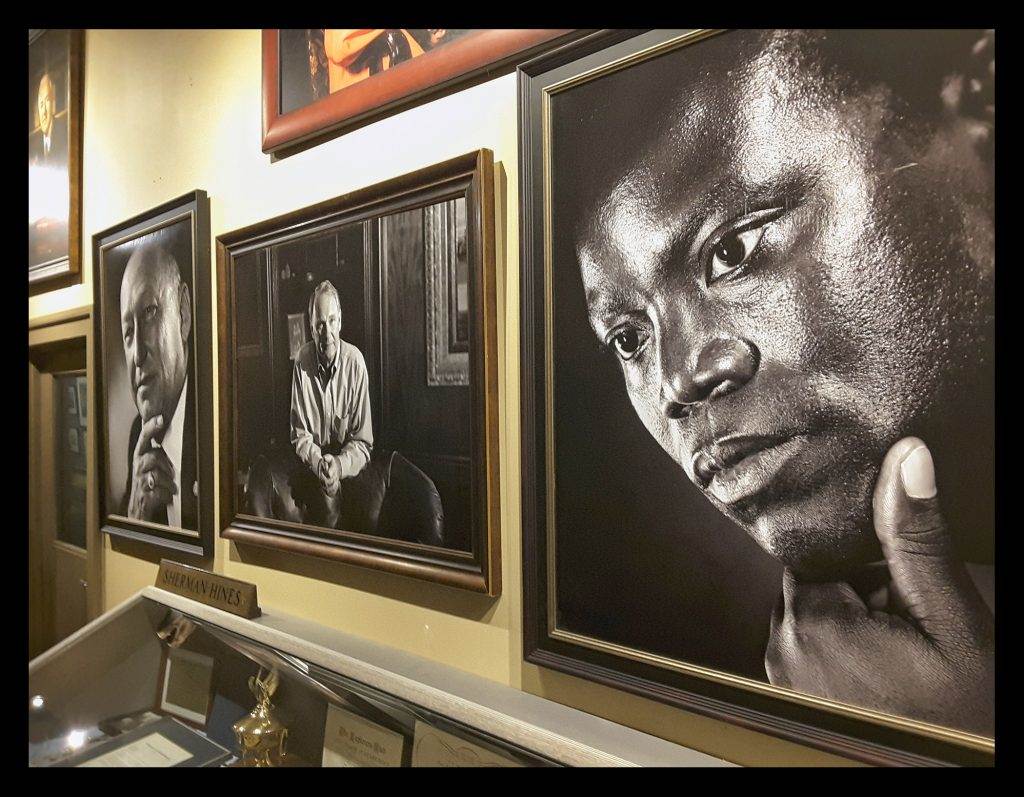
UNEXPECTED. If you expect the unexpected, you will find it in the Sherman Hines Museum of Photography. Entering, you pass through the tusks of an elephant.
Pay a modest entrance fee, and then Wendy Allen, a middle school French and Social Studies teacher, enthusiastically guides you through the eclectic mix of displays. Ahead on the wall, a series of huge black and white portraits draw the eye. One of these depicts the beautifully lit face of an African-American student at Dalhousie University in Halifax.
Wander down the hall to see the Trudeau family: Margaret Trudeau with her Nikon and a childhood portrait of boy Justin Trudeau with his siblings. There is a framed photograph of Mick Jagger by Gary P. Hayes. There are Hines’ cultural portraits, landscapes, Inukshuks, and the list goes on and on. Then, there is the holy trinity.
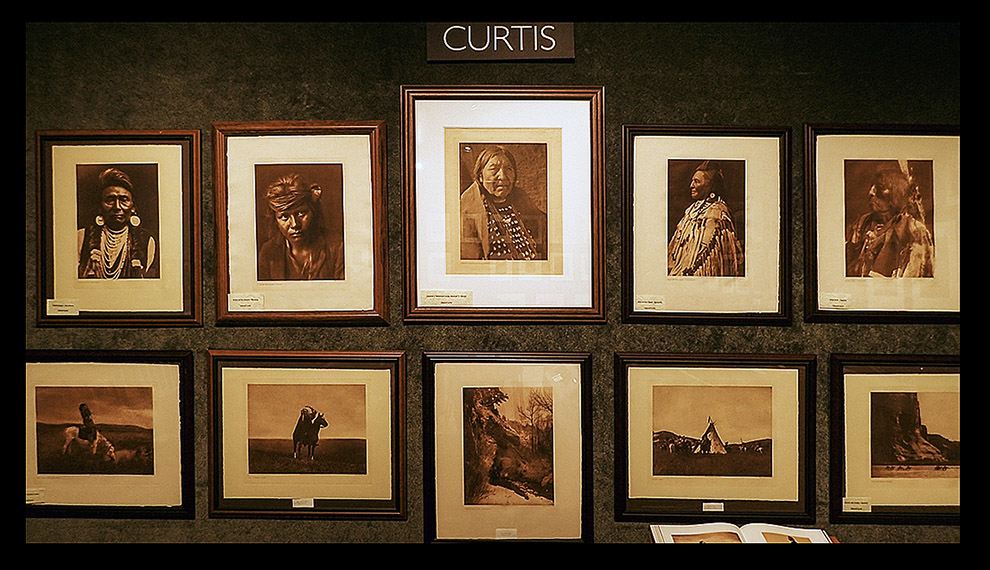
A HOLY TRINITY OF CANADIAN MASTERS
This is not a holy trinity of lenses, but instead it is a trinity of photographers. Alongside the framed prints by Hines, there are collections of work by Yousef Karsh, and Edward Sheriff Curtis. Curtis is known for his monumental quest in portraying native Americans.
1. Curtis. In the Hines’s collection are Curtis’s portraits of Chief Joseph, a “reluctant-to-be-woman” Stsimiki Blood and many others from his Indians of North America master works.
2. Karsh. On the opposite wall, a collection of Yousuf Karsh portraits shows Pope John XXXIII and Prince Philip. Sherman Hines’ master portraits are opposite the door, above his many books on Nova Scotian towns, a 50-foot long case of cameras from a Kodak Hawkeye Brownie to larger models. Armenian born Karsh is well known for his portrait of Churchill, which appeared on the 1941 cover of LIFE magazine, and is in a frame in the center of the Karsh collectioon.
3. Hines.
After he began publishing at age 40, Sherman Hines produced over 70 photographic books including Outhouses of the West, Extraordinary Light, and works on Toronto, St Johns, Frederickton, Halifax and Vancouver.
This immense library is on display adjacent to Hines’ collections of framed originals of three other Canadian photographers, including W.R. MacAskill. Joke or no joke, the Outhouses of the West, and Outhouses of the East are two of Hines’ best-selling books: he put in a poster in the gift shop that says its ‘the book that (smells) sells.” Round the corner from the gift shop, there is the Outhouse Museum. Mr. Hines has spoken in the past about it, as one of the most popular parts of the museum: “It’s unbelievably popular,” he says. “People come right off the highway just to see the Outhouse Museum room.”
Inside the glass case in this outhouse museum room there are floor to ceiling shelves of Thunder pots, neatly arranged. They testify to Mine’s passion for collecting all manner of memories and objects.
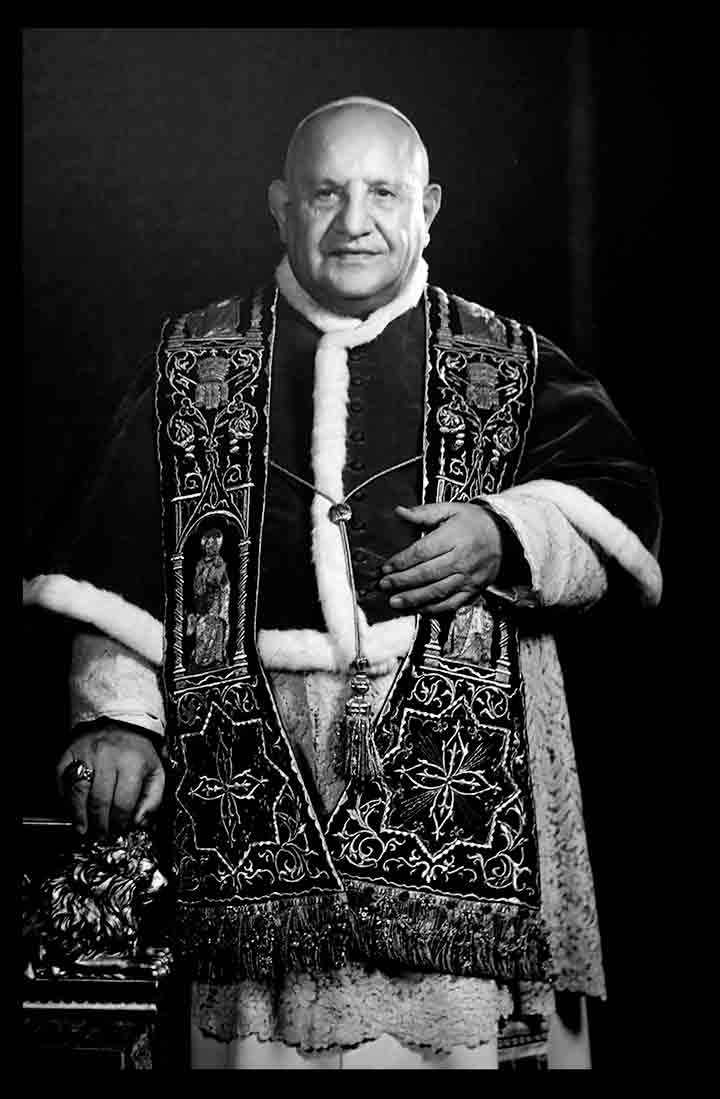
Bringing culture, history and photography together in an eclectic collection, the Sherman Hines Photography Museum is a gem for anyone interested in great photographers.
HOW TO FIND IT. The Hines Photography Collection is one of many collections inside the Rossignol Cultural Centre. Admission $5 for adults, $4 for seniors. From Halifax, drive Highway 103 westbound to Liverpool, Nova Scotia.
Take Exit 19, follow Bristol Avenue to 219 Main Street and the Sherman Hines Museum of Photography at 205 Church Street where you will see the red and black colonial style building, the Rossignol Cultural Centre.
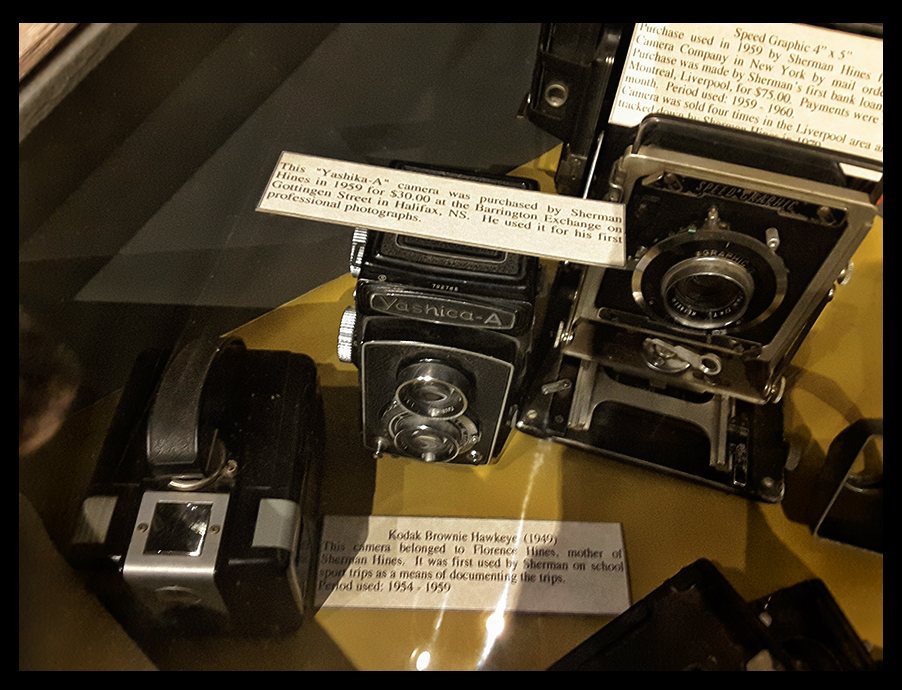
LINKS:
Article by Jim Austin

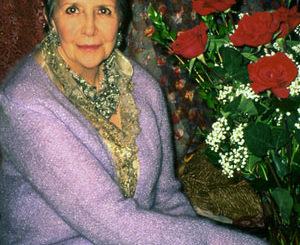
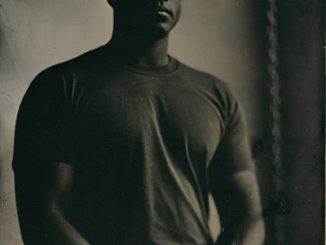
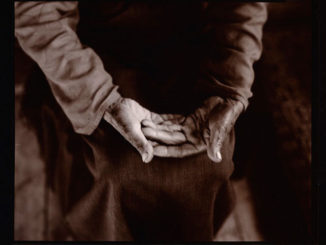
Leave a Reply